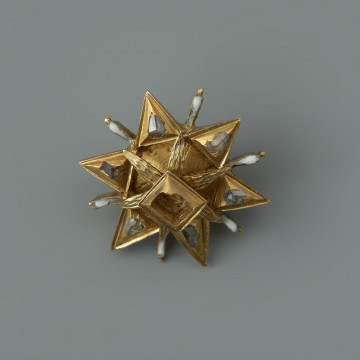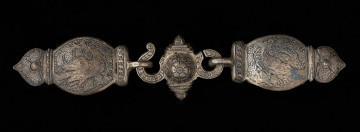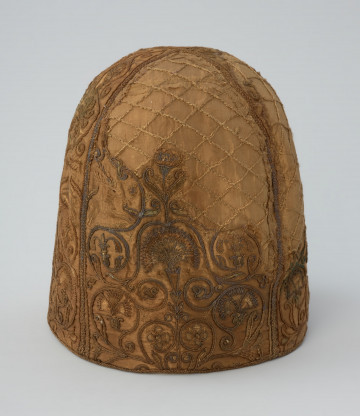
Star-shaped dress jewellery
nie po 1637
National Museum in Szczecin
Part of the collection: Jewels and costumes of Pomeranian dukes
The single rosette, shaped from gold sheets, stands out in Szczecin's collection of princely jewellery for its interesting spatial composition. Originally, it was decorated with five pearls: one placed in the centre on a high structure made of gold bands edged with spirally twisted wire, and four symmetrically placed in the lower part (one survived). The colours of the jewel are subdued, limited to gold, white pearls and enamel, and blue and black.Pearls were among the favourite materials used to make Renaissance jewels. Their strings were a striking decoration for dresses and headdresses. Large irregularly shaped pearls inspired goldsmiths, who used them to create jewels with representations of people and animals. Suspended pearls were an almost obligatory part of pendants, brooches or aigrettes. Smaller pearls were used in embroideries and to trim fabrics. Among the princely garments excavated from the crypt of the Castle Church in Szczecin, there are elements of garments embroidered with pearls on silk: a ribbon for a cap and an aigrette belonging to Duke Casimir VII (/IX) (1557-1605) or his brother, Barnim X/(XII) (1549-1603). Unfortunately, pearls made of organic material are perishable, and most of them decayed, locked away in the crypt of the castle church for centuries. The pearl preserved in the rosette also shows signs of age in the form of flaking layers.
Monika Frankowska-Makała
Other names
dress jewellery
Author / creator
Dimensions
cały obiekt: height: 1,2 cm
Object type
jewellery
Creation time / dating
Creation / finding place
Identification number
Location / status

nie po 1637
National Museum in Szczecin

około 1600
National Museum in Szczecin

około 1600
National Museum in Szczecin
DISCOVER this TOPIC
National Museum in Szczecin
DISCOVER this PATH
Educational path